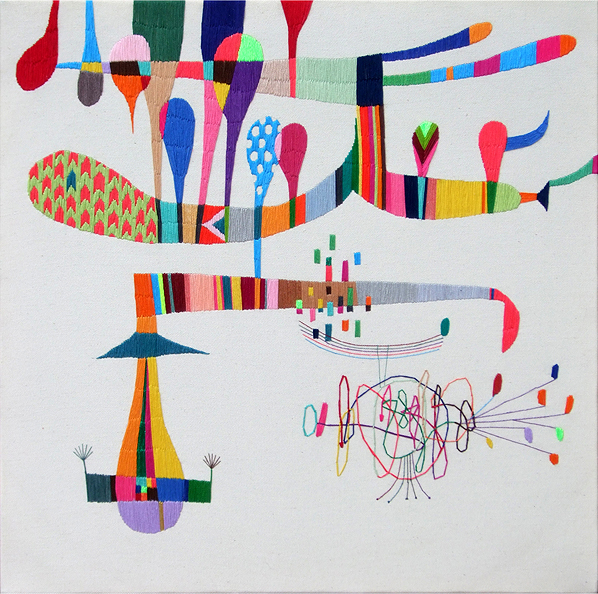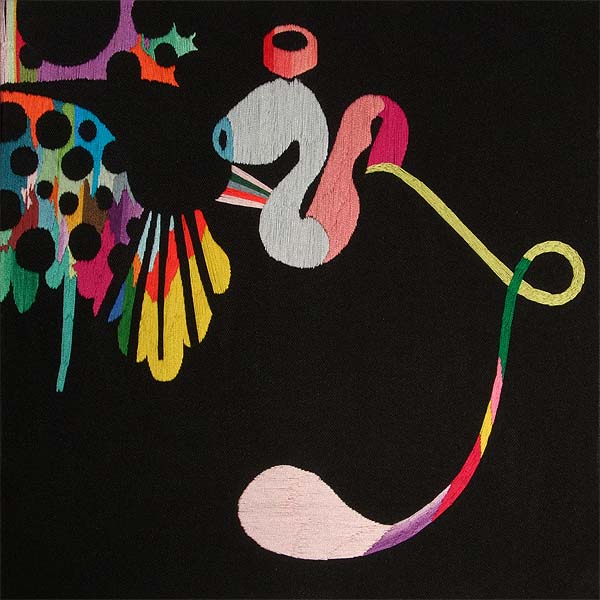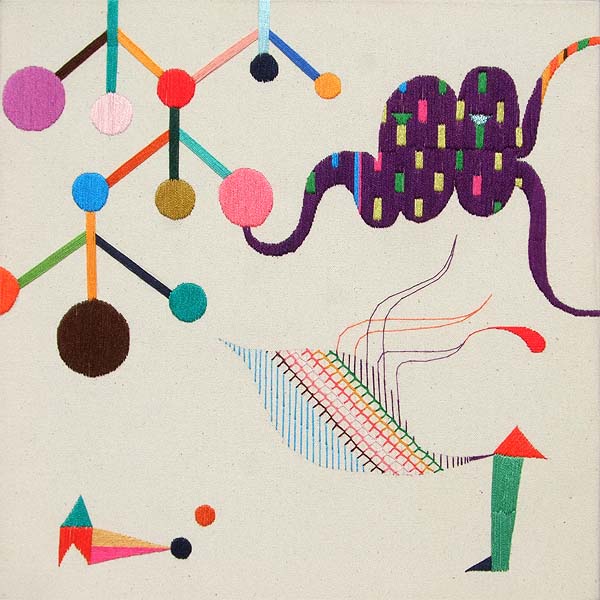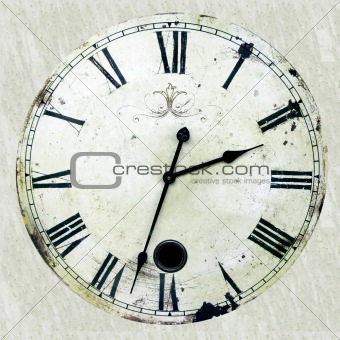I've been hoping for a nice, clear skied afternoon on which to photograph the recently completed doodle piece (otherwise yet unnamed) but alas, it is southern California's brief rainy season, and photography-friendly conditions have been elusive. So until that changes, check out something about the piece that I am enjoying:

This is the back of the piece. It is as carefully bordered and presented as the front is.
I've always been intrigued by the backs of embroideries, the unexpected imagery that develops through the path of the stitcher's hand, the contrast between the intended image and the secret, hidden one. I'm often tempted to display work backwards, but always choose not to- I don't want to sacrifice the intended imagery for the unintended.
This time I decided to give both sides their due, so that the piece can be displayed as a finished work from either direction. Front and back have differently pieced borders in the same fabrics, related but different, just as the front and back of the image is.
It's an experiment, one I'm rather enjoying right now. I think it's fitting, as well- after all, the entire thing is an experiment.
In other news, here's something fun:

These are the first 1,000 pieces of what will eventually be a 3,969 piece quilt top. I've been wanting to tackle a full-sized quilt for some time now, but was putting it off because I simply didn't have fabrics I wanted to work with in the quantity needed for a really well-matched quilt. My hands and mind have been anxious for this sort of project, though- something long term, something full of order and repetition, something soothing- so I decided to go for it anyway. I picked a double nine patch pattern (like the one below) and plan to break up the intended large-scale pattern to create my own variation.
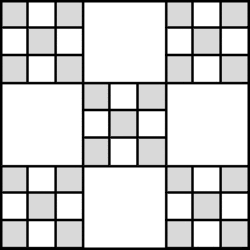
The neat part about this design, for me, is how it doesn't require (at least for about 54% of it) carefully matched fabrics. In the tradition of truly purposeful patchwork, the double nine patch gives me the chance to go through my stores of fabric, picking out even the smallest bits and finding use for them. If I can squeeze even one 1 1/2" square out of a scrap, it is useful.
Of course, by now I've gone through all of my basic pattered cottons, and have barely a quarter of the squares I need! That's another nice thing about this project, though- it lends itself to mismatching, so if some parts are composed of the materials I have now and others from scraps of future projects, that's ok. It's nicely frugal. It makes me happy.






